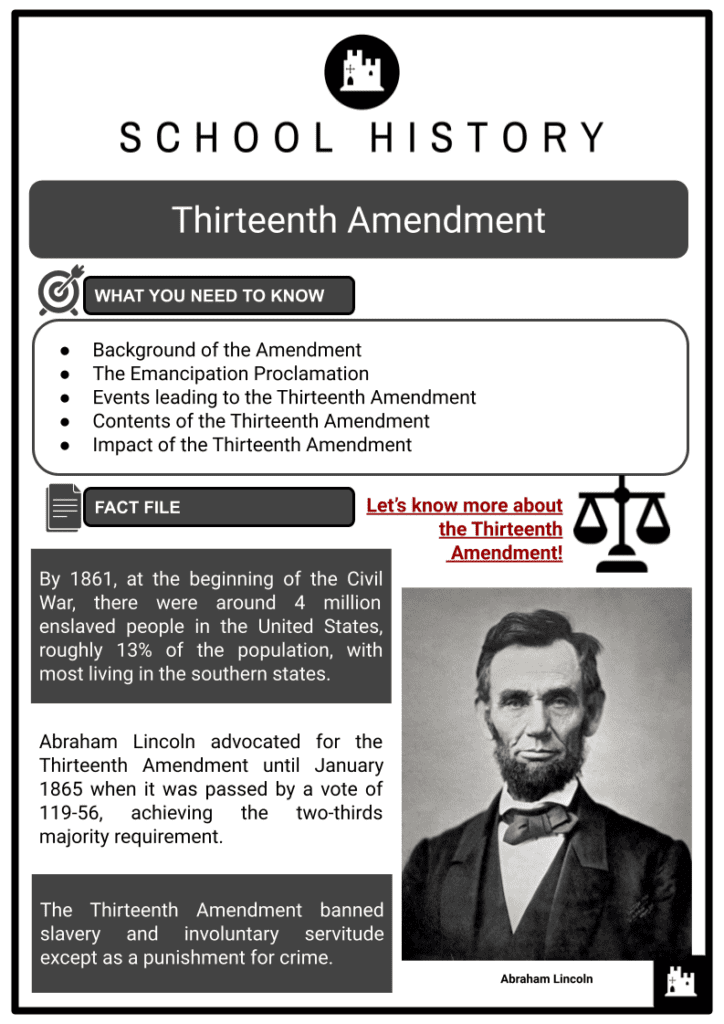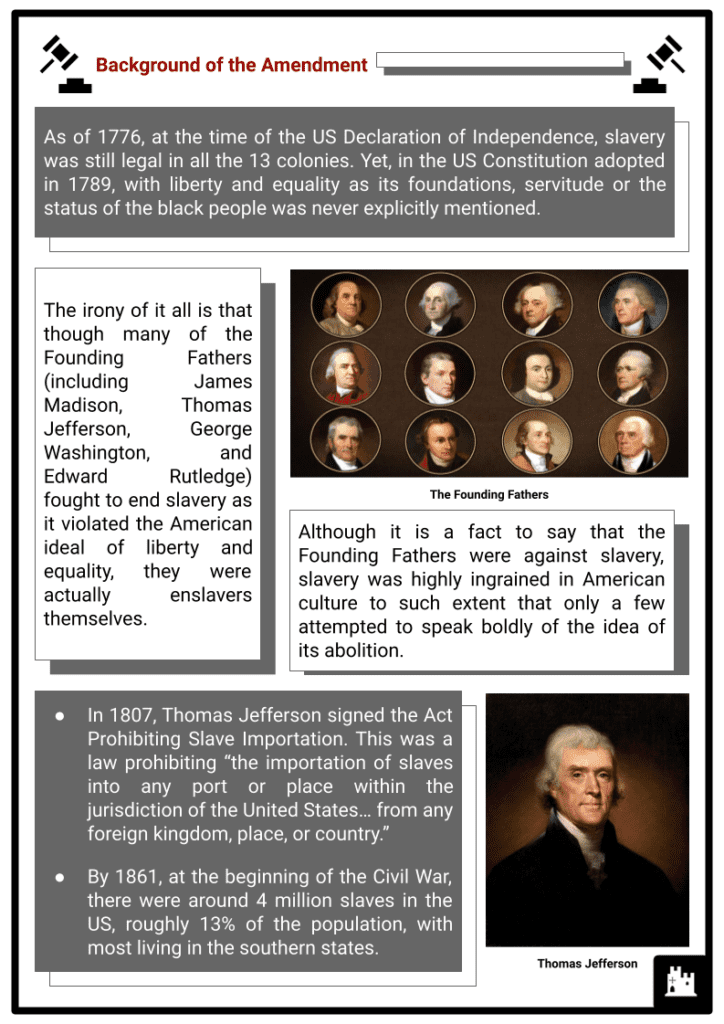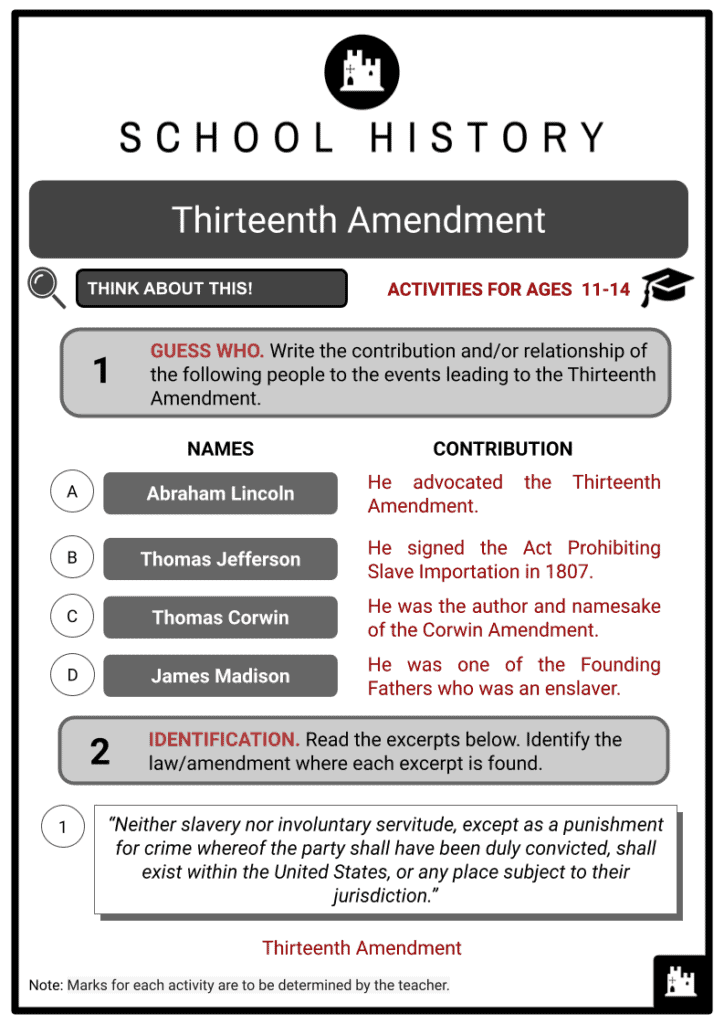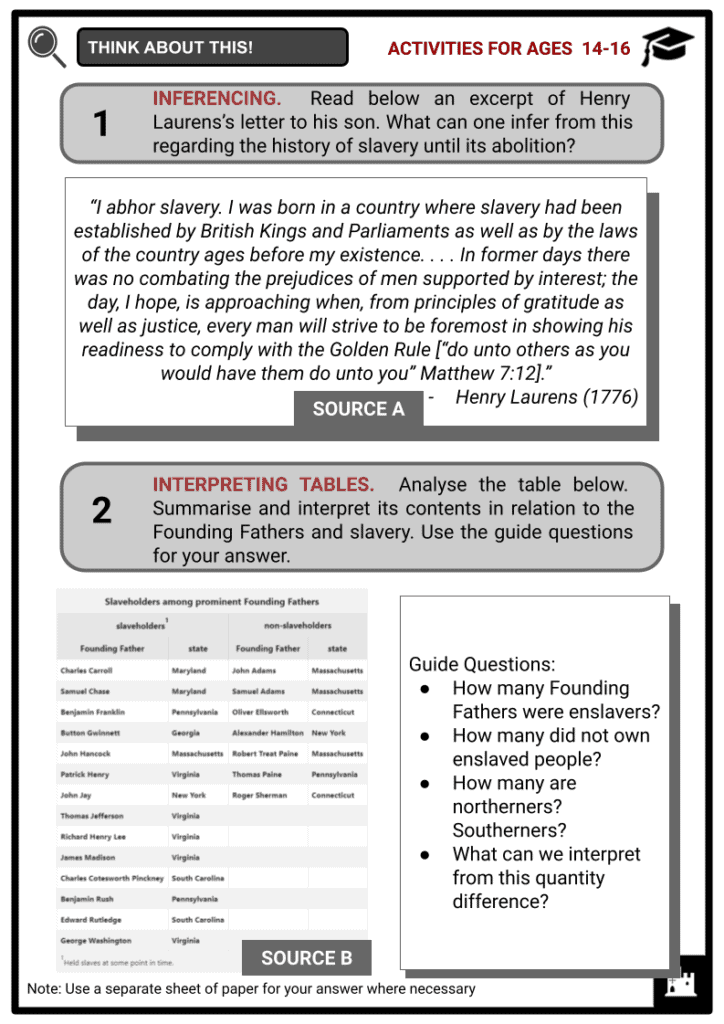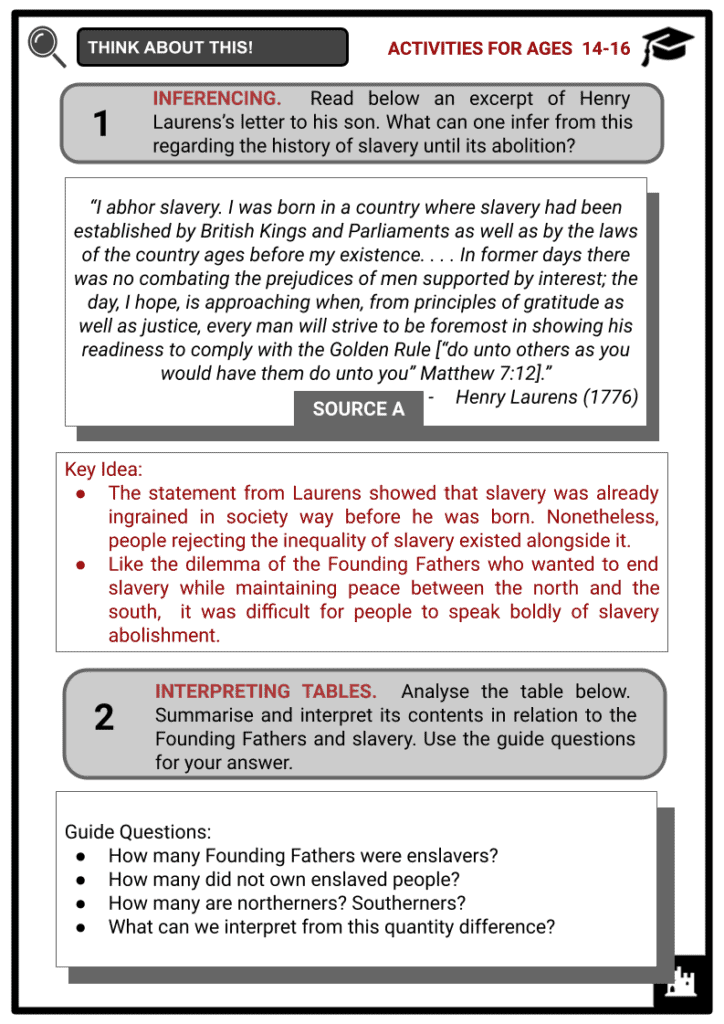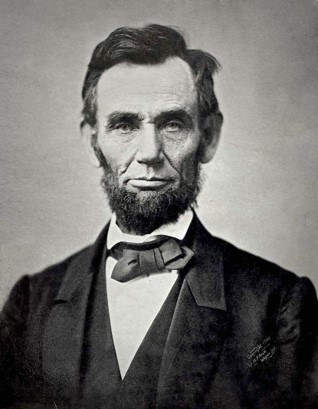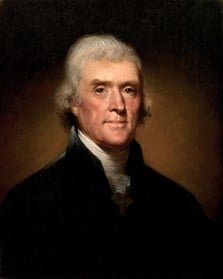Download Thirteenth Amendment Worksheets
Do you want to save dozens of hours in time? Get your evenings and weekends back? Be able to teach Thirteenth Amendment to your students?
Our worksheet bundle includes a fact file and printable worksheets and student activities. Perfect for both the classroom and homeschooling!
Table of Contents
Add a header to begin generating the table of contents
Summary
- Background of the Amendment
- The Emancipation Proclamation
- Events leading to the Thirteenth Amendment
- Contents of the Thirteenth Amendment
- Impact of the Thirteenth Amendment
Key Facts And Information
Let’s know more about the Thirteenth Amendment!
- By 1861, at the beginning of the Civil War, there were around 4 million enslaved people in the United States, roughly 13% of the population, with most living in the southern states.
- Abraham Lincoln advocated for the Thirteenth Amendment until January 1865 when it was passed by a vote of 119-56, achieving the two-thirds majority requirement.
- The Thirteenth Amendment banned slavery and involuntary servitude except as a punishment for crime.
Background of the Amendment
- As of 1776, at the time of the US Declaration of Independence, slavery was still legal in all the 13 colonies. Yet, in the US Constitution adopted in 1789, with liberty and equality as its foundations, servitude or the status of the black people was never explicitly mentioned.
- The irony of it all is that though many of the Founding Fathers (including James Madison, Thomas Jefferson, George Washington, and Edward Rutledge) fought to end slavery as it violated the American ideal of liberty and equality, they were actually enslavers themselves.
- Although it is a fact to say that the Founding Fathers were against slavery, slavery was highly ingrained in American culture to such extent that only a few attempted to speak boldly of the idea of its abolition.
- In 1807, Thomas Jefferson signed the Act Prohibiting Slave Importation. This was a law prohibiting “the importation of slaves into any port or place within the jurisdiction of the United States… from any foreign kingdom, place, or country.”
The Emancipation Proclamation
- President Lincoln was conflicted when it came to dealing with the issue of slavery in the south.
- At some point in 1861, in bids to avert the Civil War, he secretly supported the Corwin Amendment (also called Slavery Amendment).
- Thomas Corwin was the author and namesake of the Corwin Amendment.
- The amendment was ratified by 1863 and no longer supported during the Civil War.
- It stated that “No amendment shall be made to the Constitution which will authorize or give to Congress the power to abolish or interfere, within any State, with the domestic institutions thereof, including that of persons held to labor or service by the laws of said State.”
- The Corwin Amendment sought to bar the federal government from passing constitutional amendments that abolished slavery.
- After the Civil War erupted, the Emancipation Proclamation was pronounced as a strategy to subdue the rebellious states, not only because of the moral question of slavery.
- The Proclamation declared: “That on the first day of January, in the year of our Lord one thousand eight hundred and sixty-three, all persons held as slaves within any State or designated part of a State, the people whereof shall then be in rebellion against the United States, shall be then, thenceforward, and forever free.”
- Lincoln hoped that the Emancipation would cripple the southern states due to the unavailability of free labour and also result in additional able-bodied men being available to join the Union army.
- The Proclamation only applied to the states that had not changed sides, leaving the Confederacy with sworn allegiance to the Union.
The Thirteenth Amendment
- In April 1864, the US Senate passed the 13th Amendment with the required two-thirds majority vote.
- In the House of Representatives, the Democrats thought that the amendment would undermine the sovereignty of the states and therefore did not pass it. Congress was adjourned in July 1864, leaving the matter pending.
- Lincoln won the elections owing to his popularity from winning critical battles during the war, and the states that had ceded from the Union did not participate in the polls.
- After the election, Lincoln advocated for the Amendment until January 1865 when it was passed by a vote of 119-56, achieving the two-thirds majority requirement.
- By the end of 1865, all Northern states had ratified the amendment, as well as most of the “reconstructed” southern states.
- The content of the Thirteenth Amendment is as follows:
- Section 1. Neither slavery nor involuntary servitude, except as a punishment for crime whereof the party shall have been duly convicted, shall exist within the United States, or any place subject to their jurisdiction.
- Section 2. Congress shall have power to enforce this article by appropriate legislation.
Impact of the Thirteenth Amendment
- The Thirteenth Amendment significantly advanced the cause of abolitionists and was significant in alleviating the human rights violations black people were facing.
- However, racial discrimination was still rampant in the US, even after its ratification.
- Still, while the 14th and 15th Amendments were instrumental in curtailing the actions of the government, the 13th Amendment applied to private citizens and enabled Congress to enact measures against contemporary forms of slavery.
- The Black Codes and the Jim Crow laws maintained the slavery status quo by compelling blacks to work for plantation farmers and as domestic help and introduced other human rights dynamics such as convict leasing.
- However, the achievements of the century notwithstanding the full realisation of rights by Americans regardless of race, were only fully realised in the 20th Century with the enactment of the Civil Rights Act of 1964, the Voting Rights Act of 1965 and the Fair Housing Act of 1968.
Image sources:

